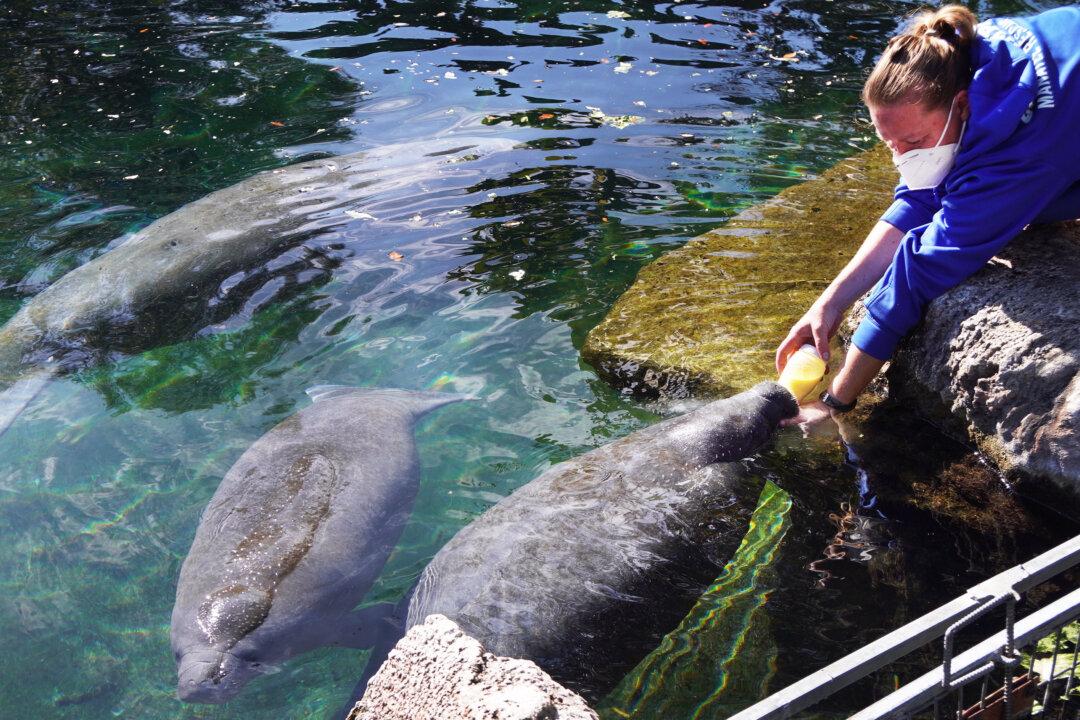State and federal wildlife officials are continuing to feed some of Florida’s starving manatees with about 10 tons of romaine lettuce per week at a feeding station in the middle of the state’s Atlantic coastline.
But, they said on Jan. 11, the population of the state’s iconic sea cows isn’t out of danger yet from what’s called the Unusual Mortality Event (UME).





